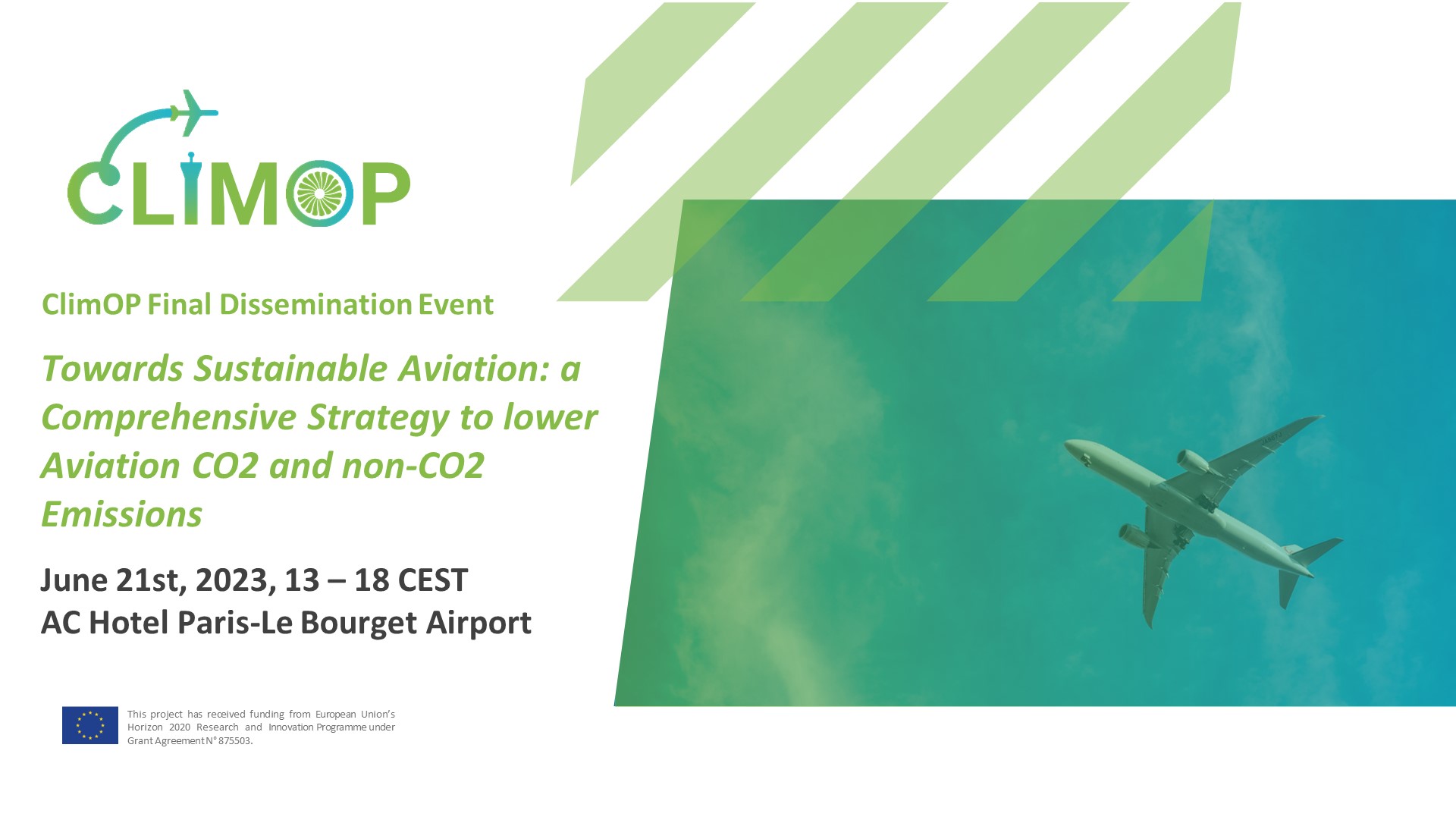The European research project ClimOP is focused on the identification and assessment of the most promising operational improvements to reduce the climate impact of aviation. In the final phase of the project, promising mitigation strategies are investigated to enable the implementation of these operational improvements. A mitigation strategy is a combination of operational improvements, current regulations and policies, recent policy developments and implementation enablers. The analysis considers the impact on affected stakeholders and the level playing field.
Mitigation strategy 1: Charging climate sensitive areas
The climate impact of aviation is caused by CO2, whose impact is independent of location and time, and non-CO2 effects (e.g. contrails, NOX and H2O) that depend on the exact location and time of the aircraft in the atmosphere. In the so-called climate sensitive areas, these non-CO2 effects have a particularly high climate impact. To estimate the climate impact, algorithmic climate change functions (aCCFs) are used (Dietmüller, et al., 2022; Yin, et al., 2022).
Charging passage through climate sensitive areas is a pricing mechanism that aims to reduce the climate impact of a flight. This is done by incentivising aircraft operators to take routes avoiding these climate sensitive areas (Niklaß, Grewe, Gollnick, & Dahlmann, 2021). By en-route charging or charge modulation based on the environmental impact, the costs of the originally flown reference flight trajectories are increased, as illustrated in Figure 1. The rerouted trajectories turn out to be economically more attractive than the reference trajectory, including the charges. The charges are distance-based, and can be thus brought into account as the flown flight trajectory is monitored.

Fig.1: Concept of charging climate sensitive areas
Results
From the analysis, it follows that the incentivisation of more climate-friendly routes is possible in the case studies with charges of 1 €/km and 1.45 €/km respectively. On a larger dataset, the DOC increase is estimated for varying charge levels. There is a high dependency on the weather conditions and the flight routes. Under the chosen assumptions (e.g. the investigated days and the choice of the threshold, when an area is viewed as climate sensitive), it turns out that the mitigation strategy mostly focuses on the contrail formation areas, whose prediction is still characterised by high uncertainties. The regulatory implementation options inclusion into air navigation fees, outside of air navigation fees and taxation are identified, and the operational phases planning, execution and accounting are characterised. A new charging scheme would have big implications for on stakeholders, like the DOC increase for airlines or network capacity issues for air traffic control. The charging is based on the polluter-pays principle. Still, it is important that a balanced approach is taken to maintain the level-playing field.
Recommendations
The detailed recommendations can be found in deliverable D3.3. In summary the recommendations are:
- For the research community: Improve climate impact (especially contrail) prediction and verification (e.g. humidity sensors onboard aircraft, satellite images).
- For policy makers: Assess the feasibility of the implementation options (inside/outside air navigation fees, taxation).
- For air traffic control: Find ways to facilitate more climate-friendly routes with regard to capacity and congestion.
- For airlines: Integrate climate sensitive areas in flight planning and assess the adaption of the network.
Mitigation strategy 2: Including non-CO2 in CORSIA and EU ETS
The EU ETS and CORSIA (ICAO) are economic measures that assign a market-based price to CO2 emissions, stimulating in-sector reductions or out-of-sector compensation of CO2 emissions. Including non-CO2 effects expressed as CO2-equivalent emissions in CORSIA or EU ETS could reduce the climate impact by incentivising the selection of climate-optimal trajectories, which, due to the non-CO2 pricing, could potentially become cost-optimal.
Results
The assessment of three types of operational improvements in the ClimOP project showed that the climate impact can be decreased at the expense of increased operational costs. As such, a voluntary adaption of the operational improvements seems unlikely. The research question for this mitigation strategy was whether pricing non-CO2 effects could increase the likelihood of airlines flying trajectories of reduced climate impact.
When the non-CO2 is neglected (Figure 2), the fuel-optimal case is close to being the cost-optimal solution (in practice other factors, such as flight time, also need to be considered). Once non-CO2 is priced, the climate-optimal case could become the cost-optimal solution. To evaluate if this concept works, the efficacy of pricing non-CO2 effects was determined as well as the impact on cost and demand estimated.

Fig.2: Simplified representation of the working principle of this mitigation strategy
The analysis has shown that pricing non-CO2 effects does provide incentives to reduce non-CO2 effects, while the efficacy of the mitigation strategy was higher for intra-European flights (EU ETS) than for flights departing or arriving in Europe (CORSIA). However, this comes at significant increase of costs to airlines, which would result in a decrease in demand.
Recommendations
The detailed recommendations can be found in D3.3. In summary the recommendations are:
- For research: Complement the work done with additional data and more detailed calculation on the influence of pricing non-CO2 effects on the airline decision-making process and analyse in detail the ability of airlines to cope with associated increase in costs. Moreover, market distortion and carbon leakage should be investigated.
- Toward possible implementation: Assure data availability and quality, address the uncertainties of the climate impact calculation and ensure that the CO2,eq calculations include the effects of SAF on non-CO2 climate impact.
Mitigation strategy 3: Sustainable taxiing
In order to reduce the emissions of the ground operations, two taxiing alternatives were investigated: onboard electric taxiing systems and electric towing trucks.
Results
Using onboard electric taxiing systems reduces the fuel consumption during the taxiing phase. This results in lower CO2 emissions of the ground operations. Due to the added weight, the fuel consumption and therefore the CO2 emissions and NOX emissions in cruise increase. An assessment on the combined climate impact and cost impact was performed, showing that the environmental benefits depend on the application. The environmental and cost benefits are largest for short flights with long taxi times, operated by smaller aircraft. The effect decreases with increasing aircraft sizes, longer flights and short taxi times.
In the electric towing concept, fully electric tow trucks are used to tow the aircraft over a substantial part of the distance between the gate/stand and the runway, so that it does not have to operate its own engines. The electric towing service could be provided to airlines either by the airport or by the ground handling service providers. The airlines would subsequently be charged after the service utilisation. The concept is most economically beneficial for single-aisle and wide-body aircraft. The main challenges lay in the operational execution depending on the airport type and layout, stakeholder cooperation and workload.
To conclude, sustainable taxiing can bring substantial benefits to the climate and for the local air quality around airports. A combination of the two solutions could be used to increase the number of flights which use sustainable taxiing solutions.
Recommendations
The detailed recommendations can be found in D3.3. In summary the recommendations are:
- For manufacturers:
- Bring to market electric towing trucks for single-aisle and heavy aircraft.
- Bring to market onboard electric taxi systems for regional aircraft with a low system weight (<250 kg).
- For policymakers: the implementation of non-CO2 in emissions in trading schemes is relevant for the implementation of onboard taxiing systems. This can prevent airlines from installing the system on particular flights to reduce cost while actually increasing climate impact.
- For airport, airlines and ground handling service providers: consider air quality improvements in the investment decisions of greener taxi solutions.
Authors: Elisabeth Van Der Sman, Lukas Soffing (NLR)
References
Dietmüller, S., Matthes, S., Dahlmann, K., Yamashita, H., Simorgh, A., Soler, M., . . . Castino, F. (2022). A python library for computing individual and merged non-CO2 algorithmic climate change functinos: CLIMaCCF V1.0. Preprint, Geoscientific Model Development Discussions.
Niklaß, M., Grewe, V., Gollnick, V., & Dahlmann, K. (2021). Concept of climate-charged airspaces: a potential policy instrument fo internalizing aviation’s climate impact of non-CO2 effects. Climate Policy, 21(8), 1066-1085.
Yin, F., Grewe, V., Castino, F., Rao, P., Matthes, S., Dahlmann, K., . . . Linke, F. (2022). Predicting the climate impact of aviation for en-route emissions: The algorithmic climate change function submodel ACCF 1.0 of EMAC 2.53. Preprint, Geoscientific Model Development Discussions.




